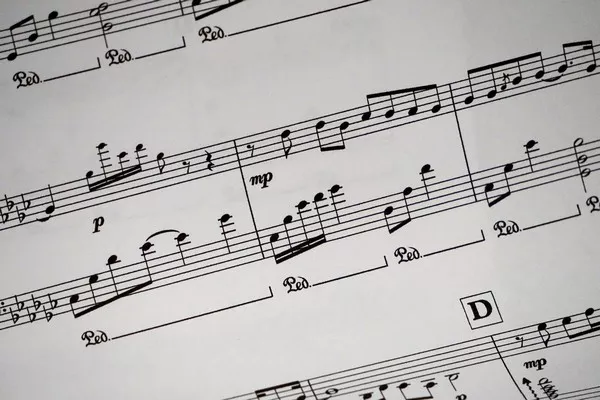Music is a universal language that can evoke a myriad of emotions and trigger various cognitive responses. Among the diverse genres and styles, fast-paced music holds a unique place in influencing the brain’s intricate mechanisms. Understanding the profound impact of rapid-tempo music on the human brain involves delving into neurological processes, emotional responses, and behavioral changes. This article aims to explore the multifaceted relationship between fast-paced music and the brain, shedding light on its effects, implications, and potential benefits.
Rhythmic Entrainment and Neural Synchronization
One of the remarkable ways fast-paced music affects the brain is through rhythmic entrainment—a phenomenon where the brain synchronizes its neural oscillations with the tempo of the music. This synchronization occurs due to the rhythmic patterns present in fast-paced music, compelling the brain to align its neuronal firing with the beat. Research has shown that this synchronization can occur in various brain regions, including the auditory cortex and motor areas, influencing perception, movement, and cognition.
Studies utilizing neuroimaging techniques such as functional magnetic resonance imaging (fMRI) and electroencephalography (EEG) have demonstrated increased neural synchronization when individuals are exposed to fast-paced music. This synchronization not only enhances auditory processing but also affects motor coordination and timing. The phenomenon of neural synchronization elucidates how the brain’s rhythmic patterns adapt to external auditory stimuli, influencing cognitive processes and behavior.
Emotional Responses and Arousal Levels
Fast-paced music has the propensity to evoke strong emotional responses and modulate arousal levels within the brain. The tempo, rhythm, and intensity of fast-paced music can stimulate the limbic system, which plays a pivotal role in regulating emotions and arousal. Research indicates that high-tempo music tends to induce feelings of excitement, exhilaration, and even tension, depending on individual preferences and the context in which the music is experienced.
Moreover, the brain’s release of neurotransmitters, such as dopamine and adrenaline, can be influenced by fast-paced music. These neurotransmitters are associated with pleasure, reward, and heightened arousal levels, contributing to the emotional experience elicited by the music. The interplay between fast-paced music and the brain’s emotional processing centers showcases the intricate relationship between auditory stimulation and emotional modulation.
Cognitive Performance and Attentional Focus
The impact of fast-paced music on cognitive performance and attentional focus is a subject of interest in various fields, including psychology and neuroscience. While some studies suggest that fast-paced music might enhance cognitive functions such as attention, memory, and information processing speed, the effects can vary based on individual differences and task demands.
Evidence indicates that fast-paced music can boost arousal levels, potentially increasing alertness and attention. In specific contexts, such as physical exercise or challenging cognitive tasks, individuals might experience improved performance when listening to fast-paced music due to heightened arousal and motivation. However, in tasks requiring deep focus or precise attention to detail, the arousal-inducing effects of rapid-tempo music might be counterproductive, leading to distraction or decreased performance.
See Also: Which Music Platform Pays the Most?
Impact on Mood Regulation and Stress Management
Fast-paced music holds a significant role in mood regulation and stress management for many individuals. The upbeat and energetic nature of fast-tempo music can serve as an effective tool for mood enhancement and stress reduction. Listening to high-energy music has been associated with the release of endorphins, the brain’s natural “feel-good” chemicals, which can elevate mood and alleviate stress.
Moreover, engaging with fast-paced music through activities like dancing or vigorous physical exercise can amplify its positive effects on mood regulation. The combination of music and movement activates multiple brain regions associated with pleasure, reward, and motor coordination, contributing to an overall sense of well-being and stress relief.
Social Interaction and Cultural Influence
Fast-paced music often plays a pivotal role in social interactions and cultural settings, shaping individual identities and fostering group cohesion. The preferences for specific genres or rhythms of fast-paced music can reflect cultural backgrounds, societal trends, and personal affiliations. Shared experiences of music concerts, dance events, or communal listening sessions create social bonds and a sense of belonging among individuals.
Furthermore, the influence of fast-paced music extends beyond individual experiences to societal impact, as seen in the evolution of music genres, trends, and movements. The interplay between fast-tempo music and societal norms underscores its significance in cultural expression, social cohesion, and the transmission of collective values.
Therapeutic Applications and Cognitive Rehabilitation
The therapeutic potential of fast-paced music in various clinical settings has garnered attention in the field of music therapy and cognitive rehabilitation. Utilizing music with higher tempos in therapeutic interventions has shown promising results in aiding motor rehabilitation, improving gait patterns, and enhancing overall physical rehabilitation outcomes.
Moreover, fast-paced music has been incorporated into cognitive interventions for conditions such as dementia and cognitive impairments. The rhythmic stimulation provided by music can enhance cognitive functioning, evoke memories, and improve emotional well-being in individuals experiencing cognitive decline. Incorporating fast-paced music into therapeutic practices showcases its potential as a non-invasive and enjoyable intervention for various neurological and psychological conditions.
Conclusion
In conclusion, the effects of fast-paced music on the brain encompass a wide spectrum of neurological, emotional, cognitive, and social dimensions. The synchronization of neural rhythms, modulation of emotions and arousal levels, impact on cognitive performance, mood regulation, social interaction, and therapeutic applications collectively highlight the intricate relationship between rapid-tempo music and the human brain. Understanding these multifaceted effects can provide insights into harnessing the potential of fast-paced music for various purposes, ranging from enhancing cognitive functions to promoting well-being and cultural connectivity.
























